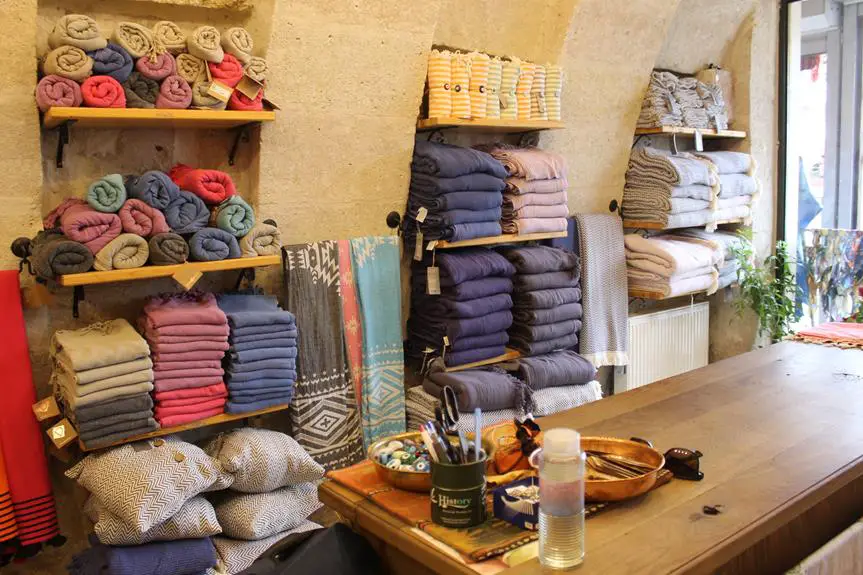You're about to embark on a journey to discover which fabrics adhere best to wood, much like a detective searching for the perfect match. Understanding the interplay between fabrics and wood adhesion is crucial for achieving professional-quality results in your projects.
By exploring the factors influencing fabric adhesion to wood, you'll gain mastery over this essential skill. Whether it's natural, synthetic, or blended fabrics, you'll uncover the secrets to optimizing their adhesion to wood surfaces.
Stay tuned for expert tips that will elevate your fabric adhesion game to new heights. Let's delve into the world of fabric and wood adhesion with confidence and precision.
Key Takeaways
- The preparation of the wood surface, including cleanliness, dryness, and freedom from contaminants, is crucial for fabric adhesion to wood.
- The texture of the wood surface should be smooth and even to ensure better contact with the fabric.
- The type of fabric plays a role in its adhesion to wood, considering factors such as flexibility and porosity.
- The compatibility between the fabric and wood, including porosity, composition, and surface energy, can affect adhesion.
Factors Affecting Fabric Adhesion to Wood
The adhesion of fabric to wood depends on several factors that influence the strength and durability of the bond. One of the key factors is the preparation of the wood surface. Properly preparing the wood surface is crucial for achieving a strong bond with fabric. This involves ensuring that the wood surface is clean, dry, and free from any contaminants that could inhibit adhesion.
Additionally, the texture of the wood surface plays a significant role in how well the fabric will adhere. A smooth, even surface provides better contact for the fabric adhesive, while rough or uneven surfaces may result in weaker adhesion.
Furthermore, the type of fabric and the type of wood are important factors to consider. Different fabrics have varying levels of flexibility and porosity, which can affect how well they adhere to wood. Likewise, the porosity and composition of different wood types can impact adhesion.
Understanding these factors and selecting the most compatible combination of fabric and wood is crucial for achieving optimal adhesion. By carefully considering these factors and properly preparing the wood surface, you can significantly improve the adhesion of fabric to wood, ensuring a strong and durable bond.
Natural Fabrics and Their Adhesion to Wood
To achieve optimal adhesion of natural fabrics to wood, carefully consider the flexibility and porosity of the fabric and the texture of the wood surface. When working with natural fabrics such as cotton and linen, it's essential to understand their unique properties to ensure a strong bond with wood.
Here are three key considerations for natural fabrics and their adhesion to wood:
- Cotton Durability: Cotton is a versatile and durable fabric, making it a popular choice for various wood adhesion applications. Its strength and resistance to tearing make it suitable for long-lasting adhesion to wood surfaces. When selecting cotton for wood adhesion projects, opt for tightly woven cotton fabrics to enhance durability and longevity.
- Linen Breathability: Linen is known for its breathability and natural moisture-wicking properties. When adhering linen to wood, its breathability can impact the overall adhesion process. The porous nature of linen allows for better absorption of adhesives, promoting a strong bond with the wood surface.
- Texture Compatibility: Consider the texture of the wood surface when choosing natural fabrics for adhesion. Rough or uneven wood surfaces may require more flexible and pliable fabrics to conform to the texture and achieve a secure bond.
Understanding the characteristics of natural fabrics like cotton and linen is crucial for achieving successful adhesion to wood surfaces. By considering durability, breathability, and texture compatibility, you can ensure a reliable and long-lasting bond between natural fabrics and wood.
Synthetic Fabrics and Their Adhesion to Wood
How effectively can synthetic fabrics adhere to wood surfaces? Do they provide a strong and lasting bond?
Synthetic fabric properties play a significant role in determining their adhesion to wood. Unlike natural fabrics, synthetic fabrics often have more consistent and predictable properties, making them suitable for specific wood adhesion applications.
The compatibility between synthetic fabrics and wood largely depends on the surface treatment of the fabric and the properties of the wood itself. Synthetic fabrics can be engineered to have enhanced adhesion properties through surface treatments such as coatings or chemical modifications.
Additionally, the selection of synthetic fabrics with properties that complement the characteristics of the wood surface can significantly improve adhesion. Understanding the specific properties of synthetic fabrics, such as their flexibility, tensile strength, and surface energy, is crucial in determining their adhesion to wood.
Blended Fabrics and Their Adhesion to Wood
When adhering blended fabrics to wood, you'll need to consider their compatibility and adhesion properties for a successful bond. Blended fabrics, such as polyester-cotton or rayon-polyester blends, offer several advantages when it comes to adhesion to wood.
Here are three key considerations when working with blended fabrics for wood adhesion:
- Compatibility: Blended fabrics often provide a balance of properties, combining the strengths of different fibers. When choosing a blended fabric for wood adhesion, consider its compatibility with wood surfaces and adhesives to ensure a strong and durable bond.
- Flexibility and Durability: Blended fabrics can offer enhanced flexibility and durability compared to single-fiber fabrics. This can be advantageous when adhering fabrics to wood, as it allows for better adaptation to the natural movements of wood and provides long-lasting adhesion.
- Adhesion Techniques: When working with blended fabrics, consider using adhesion techniques such as heat bonding or solvent-based adhesives that are suitable for the specific blend. Understanding the adhesion techniques that work best with blended fabrics can help achieve optimal adhesion to wood surfaces.
Incorporating these considerations into your approach when adhering blended fabrics to wood can result in a strong and reliable bond, maximizing the advantages offered by blended fabrics.
Tips for Enhancing Fabric Adhesion to Wood
For better adhesion of fabric to wood, you can consider experimenting with different fabric weights and weaves. Heavier fabrics tend to adhere better to wood due to increased contact and surface area. Additionally, tightly woven fabrics provide a smoother and more stable surface for adhesion.
When applying fabric to wood, it's crucial to ensure that the wood surface is clean, dry, and free from any debris or oils that could hinder adhesion. Using a primer specifically designed for fabric adhesion can also significantly enhance the bond between the fabric and wood. Applying a thin, even layer of primer to the wood surface before attaching the fabric can promote better adhesion and longevity.
Another technique to enhance fabric adhesion to wood is to use adhesives specially formulated for this purpose. These adhesives are designed to create a strong and durable bond between fabric and wood. When using adhesives, it's important to follow the manufacturer's instructions for the best results.
Frequently Asked Questions
Can Fabric Adhesion to Wood Be Affected by the Type of Wood Used, Such as Hardwood or Softwood?
When it comes to fabric adhesion to wood, the type of wood used, such as hardwood or softwood, can indeed make a difference. Wood moisture levels and delicate fabric techniques also play crucial roles.
Are There Any Special Considerations for Adhering Fabric to Painted or Stained Wood Surfaces?
When adhering fabric to painted or stained wood surfaces, it's crucial to ensure proper adhesion. Consider the type of paint or stain used, surface preparation, and using adhesives suitable for fabric and wood to achieve optimal results.
How Does Humidity or Moisture Levels in the Wood Affect Fabric Adhesion?
Humidity and moisture levels in wood can impact fabric adhesion. Temperature fluctuations and wood treatment can also affect adhesion. Consider fabric breathability and durability when choosing materials for the best adhesion to wood surfaces.
Are There Any Specific Techniques for Adhering Delicate or Thin Fabrics to Wood Without Causing Damage?
When adhering delicate fabrics to wood surfaces, consider adhesive options, compatible with wood, suitable for various fabric types. Techniques like ironing on fabric or using fabric glue can ensure secure adhesion without causing damage.
Can Fabric Adhesion to Wood Be Affected by the Presence of Knots or Other Irregularities in the Wood Surface?
Irregularities like knots can impact fabric adhesion on textured wood surfaces. They create uneven areas, making it harder for the fabric to adhere uniformly. Smooth out the surface or consider using adhesives specifically designed for textured wood to improve fabric adhesion.
- What Does Organza Feel Like? - April 23, 2024
- What Is the Difference Between Organza and Organza Silk? - April 23, 2024
- What Are the Pros and Cons of Organza Fabric? - April 23, 2024




